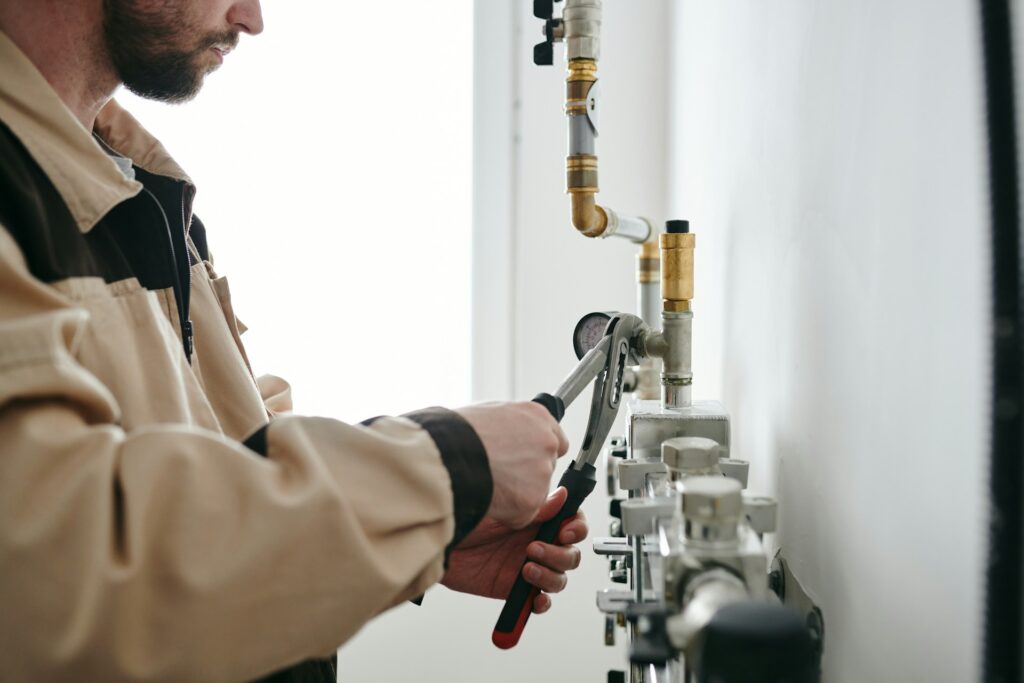Sometimes, plumbing problems pop up at the most inconvenient times. While it’s always a good idea to call a professional for major issues, there are some basic plumbing fixes you can handle on your own. Knowing how to tackle these common problems can save you time and money. One of the simplest repairs you can make is fixing a leaky faucet. That constant drip, drip, drip can be both annoying and costly. Fortunately, with a few basic tools and some patience, you can stop the leak and keep your faucet in good working order.
Clogged drains are another common issue. Whether it’s in the kitchen sink, bathroom sink, or shower, slow drains can be a real headache. With a few easy-to-find items, you can clear the blockage and get your drains flowing freely again. Toilets are essential, and when they don’t work right, it’s a big problem. If your toilet keeps running after you flush, a worn-out flapper might be the culprit. Don’t worry; replacing a toilet flapper is easier than you might think.
Lastly, dealing with low water pressure can be frustrating. Whether it’s a weak shower stream or a trickle from your taps, solving low water pressure issues is often straightforward and just requires a little know-how. In this article, we’ll walk you through simple steps to fix these common plumbing problems. Grab your tools, and let’s get started!
Fixing a Leaky Faucet
A leaky faucet can be a real nuisance, but fixing it is often simple. First, gather the tools you’ll need: a wrench, screwdriver, and replacement washers or O-rings. Make sure you turn off the water supply to the faucet to avoid a watery mess.
Start by removing the handle of the faucet. You might need a wrench to loosen the screws. Once you have the handle off, take a look at the inner workings. The washers or O-rings are usually the culprits behind leaks. If they’re worn out or damaged, replace them with new ones. Make sure they fit perfectly to avoid new leaks.
After replacing the washers or O-rings, reassemble the faucet by following the steps in reverse order. Tighten everything securely but avoid overtightening, as this can cause new leaks or damage parts. Turn the water supply back on and test the faucet. If done correctly, the leak should be gone, and you’ll have a working faucet again.
Unclogging a Slow Drain
A slow drain can be annoying, but it’s usually easy to fix. You can use simple tools like a plunger, a drain snake, or a mixture of baking soda and vinegar to clear the blockage. Start with the easiest method: the plunger.
Place the plunger over the drain and give it a few strong pumps. If this doesn’t work, try the baking soda and vinegar method. Pour a cup of baking soda down the drain, followed by a cup of vinegar. Let it sit for about 15 minutes, then flush the drain with hot water. This combination can break down minor blockages.
If the drain is still slow, use a drain snake. Insert the snake into the drain and turn the handle to break up or pull out the clog. Move it up and down to catch more debris. Be gentle to avoid damaging the pipes.
After using the drain snake, run water to ensure the blockage is cleared. Regularly cleaning your drains can prevent future clogs and keep your plumbing system running smoothly.
Replacing a Toilet Flapper
A running toilet can waste a lot of water, and often the culprit is a worn-out flapper. Replacing a toilet flapper is a straightforward task that can stop the constant running. First, turn off the water supply to the toilet and flush it to empty the tank.
Next, remove the old flapper. It’s usually attached to the flush handle with a chain and hooked onto the overflow tube. Unhook the chain and slide the old flapper off the tube. Take it with you to the store to match the size and type for a correct replacement.
Install the new flapper by attaching it to the overflow tube and hooking the chain back onto the flush handle. Make sure the chain has a little slack but isn’t so loose that it gets caught under the flapper. This ensures a proper seal.
Finally, turn the water supply back on and let the tank fill up. Flush the toilet a few times to ensure the new flapper is working correctly and making a good seal. If the toilet stops running, you’ve successfully fixed the problem.
Addressing Low Water Pressure
Low water pressure can make everyday tasks frustrating. The good news is that fixing low water pressure is often easy. Start by checking the aerators on your faucets. Mineral buildup can clog them and reduce water flow. Unscrew the aerators and clean them out or replace them if necessary.
Another common cause of low water pressure is a partially closed shut-off valve. Ensure all the valves (under sinks, behind toilets, etc.) are fully open. Sometimes during repairs or installations, valves are left only partially open, which can reduce your water pressure.
Inspect your pipes for leaks. Even small leaks can cause significant drops in water pressure. Look for damp spots or puddles around your plumbing pipes and fixtures. If you find a leak, repairing it can often restore your water pressure to normal levels.
Water pressure regulators can also malfunction, leading to low pressure. These are often found where the main water line enters your home. If adjusting the regulator doesn’t help, you might need a professional to replace it.
In some cases, low water pressure can stem from issues with the municipal water supply. If you’ve checked everything and still have low water pressure, call your local water department to see if they are experiencing problems.
Conclusion
Basic plumbing fixes can seem intimidating at first, but with a bit of knowledge and the right tools, you can handle many of them yourself. Fixing a leaky faucet, unclogging a drain, replacing a toilet flapper, and addressing low water pressure are all tasks that homeowners can manage with ease. Tackling these common issues saves money, prevents bigger problems, and keeps your plumbing system in good shape.
If you ever feel unsure or the problem persists despite your best efforts, professional help is always a good idea. Don’t let minor plumbing issues turn into major headaches. With regular maintenance and timely fixes, you can ensure your home’s plumbing works efficiently year-round.
For any plumbing needs beyond basic fixes, contact NCS today. Our team of skilled professional plumbers in Twin Cities can handle everything from minor repairs to major plumbing overhauls. Let us help you keep your home running smoothly and efficiently.



